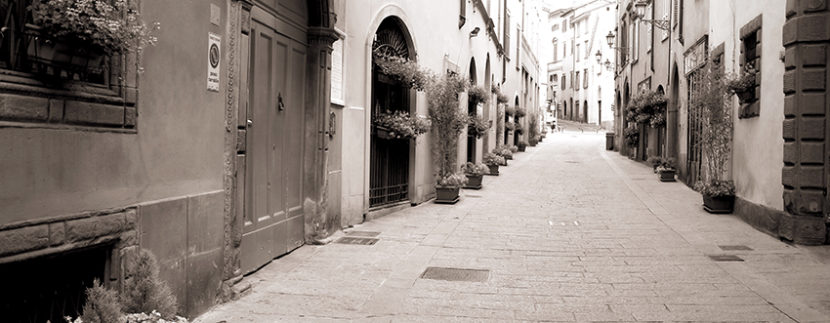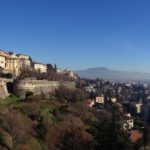Three Sacred Monsters in Bergamo

In the central and most prolific phase of his literary career, Gabriele D’Annunzio, known as “Il Vate,” published “Elettra” in 1903, a collection of poems previously published here and there. By this time, D’Annunzio had embraced Nietzsche’s superman philosophy. The second part of “Elettra” is titled “Le città del silenzio” (The Cities of Silence), referring to cities that evoke the refinement of their past history, especially during the Renaissance.
These cities are mainly from Tuscany, Umbria, Marche, and Romagna, such as Ferrara. However, Bergamo is also mentioned, a city that didn’t have a significant courtly history. Yet, D’Annunzio had seen Lorenzo Lotto’s work, and he evokes it in an fresco in Trescore, in the Oratory of Villa Suardi, where Lotto depicted the “True Vine,” representing Christ standing with open arms, and vines extending from his fingers, carrying depictions of various saints.
D’Annunzio, however, is less interested in this aspect and more captivated by the magic silence of Bergamo Alta. He describes the flight of angels and cherubs “flying as a squadron…fled from Trescore.” The magical silence is even more evoked in the previous stanza, where the poet mentions arriving in Bergamo in early spring and describes the beauty of Santa Maria Maggiore: “It seemed as if Santa Maria Maggiore / was flowering with light ashes.”
In 1949, another giant figure, Le Corbusier, visited Bergamo. He was fascinated by Città Alta and made a sketch of Palazzo della Ragione and the Campanone tower. He commented, “Here, no cars. Here, the splendid city without wheels.” He explained that when he visits a friend, he leaves his coat at the door. Visitors to old Bergamo can leave their cars at the door. This insight led to restrictions on car circulation in Città Alta.
In 1948, the renowned writer Ernest Hemingway made his second trip to Italy. He traveled across various places, including Bergamo, revisiting the sites where he had been wounded during World War I. Despite not recognizing some places, he buried a 1000-lire banknote where he believed he had been injured. Hemingway had a knack for turning places he visited into myths through his stories, creating legends around places like the Gritti Hotel in Venice, the Harris Bar, and more.
However, Bergamo only briefly crossed his path during this trip. The city left an impression, and he roamed around Città Alta for hours. The silent and enchanting atmosphere of the Upper Town fascinated him. While Bergamo didn’t become a prominent setting in Hemingway’s stories, the city added a touch of magic to his Italian journey.
These encounters with famous personalities highlight the unique charm and cultural richness that Bergamo offers to those who take the time to explore its historical and artistic heritage.


